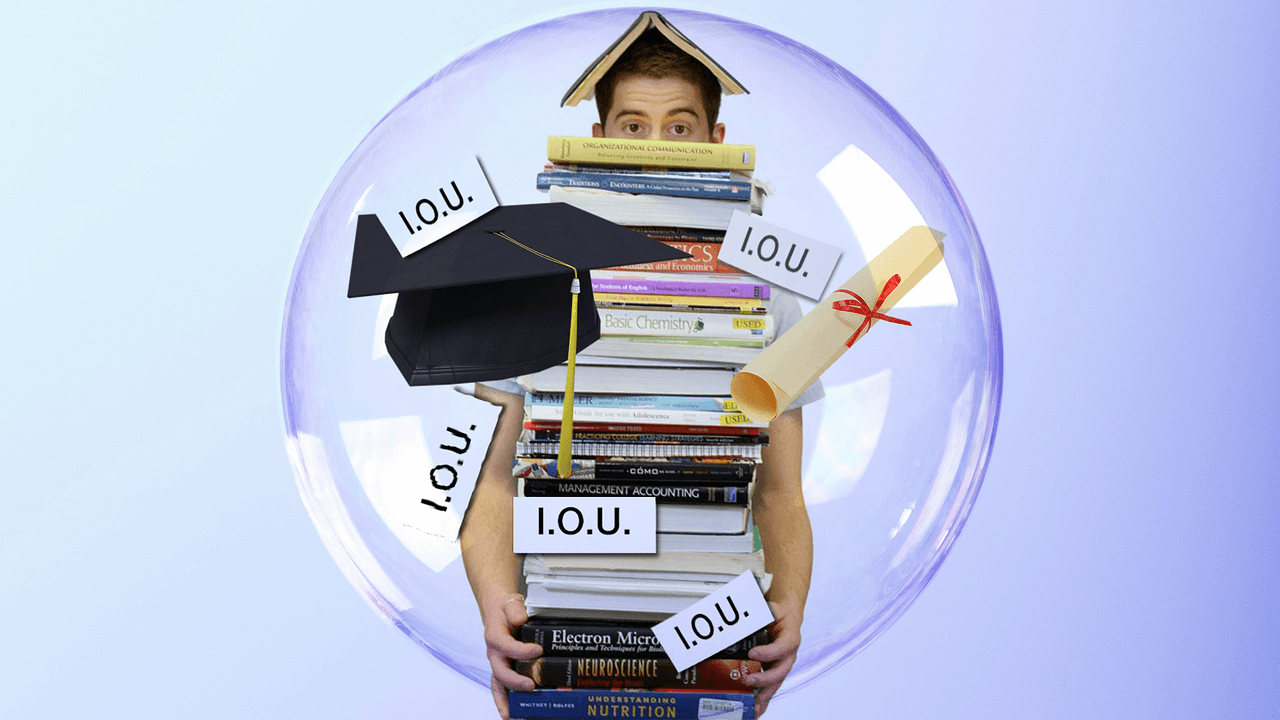Student-centric advice and objective recommendations
Higher education has never been more confusing or expensive. Our goal is to help you navigate the very big decisions related to higher ed with objective information and expert advice. Each piece of content on the site is original, based on extensive research, and reviewed by multiple editors, including a subject matter expert. This ensures that all of our content is up-to-date, useful, accurate, and thorough.
Our reviews and recommendations are based on extensive research, testing, and feedback. We may receive commission from links on our website, but that doesn’t affect our editors’ opinions. Our marketing partners don’t review, approve or endorse our editorial content. It’s accurate to the best of our knowledge when posted. You can find a complete list of our partners here.
Student Loan Default: How to Get Out of It
 By
Kayla Korzekwinski
By
Kayla Korzekwinski 
Kayla Korzekwinski is a Scholarships360 content writer. She earned her BA from the University of North Carolina at Chapel Hill, where she studied Advertising/PR, Rhetorical Communication, and Anthropology. Kayla has worked on communications for non-profits and student organizations. She loves to write and come up with new ways to express ideas.
Full BioLearn about our editorial policies

Maria Geiger is Director of Content at Scholarships360. She is a former online educational technology instructor and adjunct writing instructor. In addition to education reform, Maria’s interests include viewpoint diversity, blended/flipped learning, digital communication, and integrating media/web tools into the curriculum to better facilitate student engagement. Maria earned both a B.A. and an M.A. in English Literature from Monmouth University, an M. Ed. in Education from Monmouth University, and a Virtual Online Teaching Certificate (VOLT) from the University of Pennsylvania.
Full BioLearn about our editorial policies

Student loan default can be stressful, and have a lot of consequences. Luckily, student loan default is a problem that can be solved. It’s also important to know how to get out of student loan default before you find yourself in it. Continue reading to learn about how to get out of student loan default!
Student loan default defined
Student loans go into default as a result of missed payments. Federal loans enter default when a payment hasn’t been made for 270 days. For private loans the time frame varies, so be sure you know the details of your loans. The time frame for federal loan default depends on the lender, but most enter default after 120 days of missed payment.
See also: Student loan default: What it is and how to avoid it
How to get out of federal loan default
The consequences of federal student loan default are quite harsh. Luckily, there are three ways to get out of student loan default. One of the methods even removes the default from your credit history.
See also: How do student loans affect credit?
Loan rehabilitation
Loan rehabilitation is a solution that takes more time, but it comes with more benefits.
The process of rehabilitating a loan begins by contacting your lender. Then, you will agree in writing to make 9 voluntary and affordable monthly payments. Your lender will determine the amount of these payments based on factors such as your income. Usually, the monthly payment equals 15% of your yearly income divided by 12. The 9 payments must be made consecutively within 10 months. After your 9th repayment, the Department of Education will send a request to credit bureaus to remove the default from your credit history. However, the late payments before entering default will remain on your credit record. There are other benefits to federal loan rehabilitation:
- Regain eligibility for deferment and forbearance
- Recover eligibility for repayment plans
- Regain eligibility for federal loan forgiveness programs
- Reacquire eligibility to receive federal student aid
- Interest and possible collections costs do not capitalize
- Involuntary payments through wage garnishment and tax return interception will stop
Loan rehabilitation can only be used once per loan. If the same loan enters default again, you will have to use a different method to get out of it.
Loan consolidation
Another way to get a loan out of default is through consolidation of the defaulted loan. Consolidating means combining multiple federal student loans into a single Direct Consolidation loan. This solution is a quicker way to get your loan out of default.
Loan consolidation starts with an application submitted to the Department of Education. To consolidate a defaulted loan, you must agree to pay the Direct Consolidation loan under an income-driven repayment plan or make 3 on-time, voluntary monthly payments before consolidating. Defaulted Direct Consolidation loans can also be re-consolidated to get out of default. To do this, the defaulted consolidation loan must be combined with at least one other eligible loan.
See also: Student loan consolidation vs. refinancing
Once a defaulted loan is consolidated, it becomes eligible for income-driven repayment plans and deferment and forbearance. There are additional benefits that come with consolidating a defaulted loan:
- Regain eligibility for loan forgiveness programs
- Regain eligibility to receive federal student aid
A federal loan that is being paid through wage garnishment or another collections process cannot be consolidated until the court order is lifted.
Repayment in full
The final and obviously best option for getting out of student loan default is to pay the loan in full. Contact your loan servicer to arrange this payment.
How to get out of private loan default
Like the time frame and triggers of entering default, the methods for getting out of default on a private loan varies between lenders. Be sure that you know the terms of your loan and how your private lender handles default. The best thing to do is contact the lender and make new payment arrangements. Some lenders may be more willing to work with you than others.
One interesting thing about private student loan default is that they’re subject to statutes of limitations. This means that after a certain amount of time passes it’s illegal for the lender or collector to sue you for your unpaid debt. The money is still owed, but you cannot be taken to court. Statutes of limitations for education loans vary between states in the U.S.
Over all, be sure to stay in contact with your lender, and know your options for getting out of default. Update the lender about any issues that may affect your repayment status. If you make a plan for remedying your default as soon as you find yourself in it, you will be able to get out with as little problems as possible!
Related: Can I defer my loans if I go to grad school?
Frequently asked questions about getting out of student loan default
Can I fix my credit score after entering student loan default?
Is it worse to enter student loan default on private loans?





